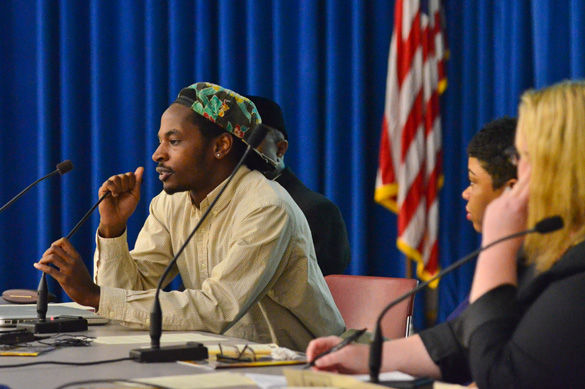Ferguson media coverage discussed
October 27, 2014
Citizens expressed their opinions about media coverage of the events in Ferguson, Mo. in the Carbondale Civic Center on Monday night.
A panel of media professionals and specialists, varying from radio to photography and cinema, gathered to discuss journalistic practices covering recent events including protests, looting and the death of Michael Brown.
William Freivogel, former director of the SIU School of Journalism, said the Michael Brown case was the biggest story he had covered in his 45 years as a reporter. He also said he witnessed the influence of media biases on citizens, and the media’s inaccuracy, which incorporated itself in news.
Advertisement
“Many of the crowd on Twitter as well as on the street demanded that Gov. [Jay] Nixon should immediately arrest officer Darren Wilson for murder,” he said. “And that the arrest be done in the name of civil rights, hardly mentioning the fact that officer Wilson has some civil rights too.”
The panelists’ dialogue focused on different types of media, and the role social networking sites such as Twitter and Vine played in educating the general public.
Patricia Bynes, a Ferguson resident and citizen journalist, said social web outlets contributed to some of the inconsistencies in information regarding the events in Ferguson.
“Being brief and concise and be able to get people’s attention is what you want to be able to do,” she said. “We want information first rather than wanting it to be accurate, and there’s been many instances in which the community reacts to what they see in the media. Sometimes that’s a good thing and sometimes it’s a bad thing.”
Following the panel discussion, Carbondale community members shared their opinions on media coverage and representation, as well as certain factors that could cause news sources to report different versions of information.
Sabrina Hardenberg, an independent researcher from Carbondale, said another inconsistency in media reporting could be news sources having agendas.
“I’m inclined to think that some reporters are influenced by shareholders or publishers,” she said. “Shareholders of the paper may direct a certain slant of the news and what can be published and what can’t be. And that’s perhaps why social media is trying to transcend that limited display of information.”
Advertisement*
Robert Cohen, a St. Louis Post-Dispatch photographer who photographs the events in Ferguson, said no matter the profession, people come in with bias and predisposition. But as journalists their goal of reporting is to present the most unfiltered version of news.
“There’s no person out there that can present something as totally an observer with no life experience,” he said. “If all factions are hating us, we’re doing something right along the lines. People go to sources that validate their opinions on how things may be.”
Maurine Pyle, community activist and alumna, said her residence in Alabama, and the discrimination she witnessed early in her life has affected her perception of controversial events involving people of different races.
“It’s almost impossible to avoid a racial undertone when events like this take place,” Pyle said. “The possibility that [the Michael Brown case] wasn’t police action, but a race-based murder is my gut reaction, but that might not be true.”
Advertisement









